| I traveled in and out of the U.S. often during my childhood,
but was in Silver Spring, Maryland, at four years old, in time to
celebrate a “First Thanksgiving” with my kindergarten class.
I remember the boys building a fort with those cardboard brackish-looking
giant blocks, while us girls, as “Pilgrim women,” wore dresses
and tore hunks of baked chicken into smaller bits for the big meal.
I don’t know which is sadder: the fact that I, along with my
(not that many) Black classmates were playing the roles of white colonizers
in this theatre of the absurd, or that I don’t remember who played
the Indians. I don’t even remember if anyone did; they are erased
from my memory, as Native and Indigenous people so often are erased
from the narrative of the American past, present, and future.
On Indian
Country Today, Christina Rose writes, “Without guidance,
too many teachers may celebrate Native American Heritage Month in
the only ways they know how: paper bag vests and feathers, classroom
pow wows, and discussions on who Indians were.” Many of us
who celebrate the Thanksgiving
holiday would be hard pressed to know who the Wampanoag
people were and are, what the Haudenosaunee,
or Iroquois, Thanksgiving Address is, or that government policy
forced “relocation”
of Native Americans away from their productive farmland and the
crops, like corn and pumpkin, that remain symbols of the Thanksgiving
holiday today.
November, designated as Native American Heritage Month, offers
an opportunity for all of us to become more educated about that
complex history and current state of affairs. Like all stories,
Native stories are not a single story of defeat, bows and arrows,
or of “the past.” They include stories of joy, of cultural
pride, of meeting everyday challenges, fun, and celebrations of
family and friendship. Along with resources such as How
To Tell The Difference: A Guide for Evaluating Children’s Books
for Anti-Indian Bias, Vision
Maker Media, A
Broken Flute: The Native Experience in Books for Children, and
American
Indians in Children’s Literature, and the books below,
we can begin to tell more complete and honest narratives of the
rich and varied Native American story in the United States.
Picture Books
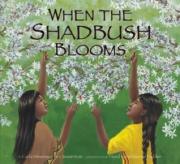 When
the Shadbush Blooms When
the Shadbush Blooms
by Carla Messinger and Susan Katz, illustrated by David Kanietakeron
Fadden
A lovely celebration and affirmation of tradition and change,
this story of a Lenni Lenape girl experiencing the joys of the
seasons and remembering the ways that her ancestor did the same
is timeless. Video, activities, and more inspired by the book
can be found online.
(Ages 3+) |
|
 Dragonfly
Kites Dragonfly
Kites
by Tomson Highway, illustrated by Julie Flett
This bilingual (English/Cree) story is a celebration of heritage,
the power of imagination, the small joys of family life, and
the beauty of the natural world. This second book in Highway’s
Magical Songs of the North trilogy is “a loving portrait
of a family in communion with their environment,” according
to Publishers
Weekly.
(Ages 4+) |
|
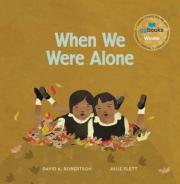 When
We Were Alone When
We Were Alone
by David A. Robertson, illustrated by Julie Flett
This gorgeous story of a young girl who learns why her grandmother
chooses to dress and speak in ways that celebrate her Cree heritage
offers a narrative of resistance set in a boarding school experience.
Kirkus
writes, “A beautifully quiet, bold strength arises from
the continued refrain ‘When we were alone’ and in
how the children insisted on being themselves.” (Ages 4+) |
|
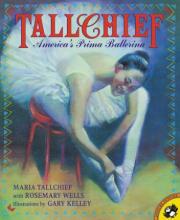 Tallchief:
America's Prima Ballerina Tallchief:
America's Prima Ballerina
by Maria Tallchief with Rosemary Wells, illustrated by Gary
Kelley
This inspiring story of Maria Tallchief, who grew up on an Osage
Indian reservation and went on to become a world-renowned prima
ballerina, will appeal to any young reader with a passion (or
two).
(Ages 5+) |
|
 Thunder
Boy Jr. Thunder
Boy Jr.
by Sherman Alexie, illustrated by Yuyi Morales
Yuyi Morales’s exuberant illustrations alone are more than
worth the price of admission on this one. The familiar story
of a “Jr.” wanting to establish his own identity (when
your dad is “Big Thunder,” you don’t necessarily
want to be known as “Little Thunder”) feels entirely
original when told with Alexie’s signature humor and heart.
Readers will cheer as Little Thunder realizes that he has been,
and will always be, his own special self. (Ages 5+) |
|
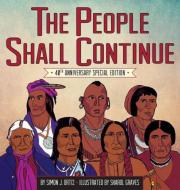 The
People Shall Continue The
People Shall Continue
by Simon J. Ortiz, illustrated by Sharol Graves
The announcement of a new 40th-anniversary edition of Ortiz’s
classic was welcomed by many, as this book’s clean, lyrical
language and “unembroidered” art make it a valuable
teaching tool and wonderful read-aloud. Serving as a counterpoint
to common Thanksgiving tropes, young readers will gain perspective
on the long history of Indigenous people in North America and
the various ways in which they have endured despite European
colonization.
(Ages 6+) |
|
 I
Am Not a Number I
Am Not a Number
by Jenny Kay Dupuis and Kathy Kacer, illustrated by Gillian
Newland
Based on the experiences of Dupuis’s grandmother, I Am
Not a Number tells a story of the boarding schools that the
United States created to “civilize” Native children.
The children were often punished for speaking their own languages,
physically abused, and forced to give up their very identities.
Kirkus writes that “I Am Not a Number is perfect to get
the conversation about residential schools started with your
children. It opens the door for them to ask questions about
the subject and the story is relatable in a way they can follow.”
(Ages 7+) |
|
| Middle Grade |
|
|
 Chickadee Chickadee
by Louise Erdrich
Set around the same time period as the ever-popular Little
House books, the Birchbark
House series has become a classic narrative in its own
right. “I want people to enter into this world, and children
especially to identify and enter into a world where they are
among a Native American family. This family had its angers,
trials, happiness, pains, heroism, desperation, and annoyances.
You know, everything that anyone's family has,” said
Erdrich in an interview.
The award-winning Chickadee kicks off a new arc in this delightful
series, featuring Chickadee, who has been separated from his
twin and is on a quest to be reunited with his brother. Followed
by 2016’s Makoons.
(Ages 8+)
|
|
 Talking
Leaves Talking
Leaves
by Joseph Bruchac
Raised by his mother and uncles, Uwohali is longing to reconnect
with his father, Sequoyah, who returns to his community with
a new family. Torn between loyalty to the family who raised
him and his newfound passion to help his father preserve Tsalagi
tradition, Uwohali comes of age in Bruchac’s vivid and
history-rich tale.
(Ages 9+) |
|
|
 Super
Indian Books Super
Indian Books
by Arigon Starr
Originally a series of radio plays developed and produced
by Kickapoo tribe member Arigon Starr, Super
Indian is a two-volume comic collection loaded with humor
and love. “You can look at it as satire or parody —
but underneath the yuks, it’s great to explore issues
of identity, community and how Native folks are perceived,”
said the author in an interview with Indian
Country Media Network. Fans of both classic and modern
superhero tales will devour these stories.
(Ages 10+)
|
|
|
Young Adult
|
|
|
 Code
Talker: A Novel About the Navajo Marines of World War Two Code
Talker: A Novel About the Navajo Marines of World War Two
by Joseph Bruchac
“Readers who choose the book for the attraction of Navajo
code talking and the heat of battle will come away with more
than they ever expected to find,” writes Booklist in
a starred review. Bruchac tells a masterful and inspiring
tale of 16-year-old Navajo boy Ted Begay who, like many Native
“code talkers,” used his language and culture to
save countless lives, and became an American war hero.
(Ages 12+)
|
|
|
 Dreaming
in Indian: Contemporary Native American Voices Dreaming
in Indian: Contemporary Native American Voices
edited by Lisa Charleyboy and Mary Beth Leatherdale
This award-winning and powerful collection offers readers
a mirror and window into the lives and worlds of contemporary
Native Americans, working in a variety of fields and with
diverse areas of expertise. In a starred review, School Library
Journal says that Dreaming in Indian “[e]ffectively presents
honest portrayals of strong, hopeful, and courageous indigenous
youth living non-stereotypical lives.” Charleyboy and
Leatherdale teamed up for a second anthology, #NotYourPrincess:
Voices of Native American Women, that has been equally
praised for its “stunning” visual and written content.
(Ages 12+)
|
|
|
 The
Absolutely True Diary of a Part-Time Indian The
Absolutely True Diary of a Part-Time Indian
by Sherman Alexie, illustrated by Ellen Forney
I fell in love with Alexie’s National Book Award-winning
title when it was first published, and ten years later this
heartbreaking — and heartwarming — coming-of-age
tale is as vibrant as ever. Arnold Spirit Junior’s experiences
growing up on a Spokane reservation (like Alexie) are often
hilarious and sometimes awful. Fourteen-year-old Arnold’s
pain and eventual empowerment, particularly through writing
and drawing, will resonate with all kinds of young readers.
(Ages 12+)
|
|
|
 All
the Real Indians Died Off (And 20 Other Myths About Native
Americans) All
the Real Indians Died Off (And 20 Other Myths About Native
Americans)
by Roxanne Dunbar-Ortiz and Dina Gilio-Whitaker
Tackling commonly held but false beliefs, such as “Columbus
Discovered America” and “Sports Mascots Honor Native
Americans,” Dunbar-Ortiz and Gilio-Whitaker offer a deftly
accessible resource that is a perfect companion to Ortiz’s
An
Indigenous People’s History of the United States.
It’s an adult title, but would complement any older teen’s
exploration of Native American history.
(Ages 14+)
|
|
|
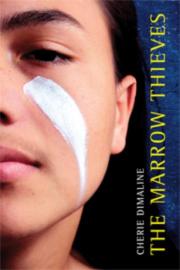 The
Marrow Thieves The
Marrow Thieves
by Cherie Dimaline
This brand-new dystopian novel comes highly recommended by
several of my librarian friends. The Marrow Thieves features
a world devastated by global warming, whose inhabitants have
lost the capacity to dream. Only the Indigenous people of
North America have retained this ability, and predators are
willing to kill for it.
(Ages 14+)
|

About the author:
Olugbemisola Rhuday-Perkovich is a mom, wife, sister, friend, and
library-lover. She's also the author of 8th
Grade Superzero and the forthcoming Two
Naomis with Audrey Vernick. She believes in the power of a good
book, a long walk, and a nice cup of tea (snacks optional but strongly
recommended). Olugbemisola lives in NYC where she loves to teach
writing, cook, do crafts in many forms, and needs to get more sleep.
Find her online at olugbemisolabooks.com
and @olugbemisola
on Twitter.
|




 When
the Shadbush Blooms
When
the Shadbush Blooms Dragonfly
Kites
Dragonfly
Kites When
We Were Alone
When
We Were Alone Tallchief:
America's Prima Ballerina
Tallchief:
America's Prima Ballerina Thunder
Boy Jr.
Thunder
Boy Jr. The
People Shall Continue
The
People Shall Continue I
Am Not a Number
I
Am Not a Number Chickadee
Chickadee Talking
Leaves
Talking
Leaves Super
Indian Books
Super
Indian Books Code
Talker: A Novel About the Navajo Marines of World War Two
Code
Talker: A Novel About the Navajo Marines of World War Two Dreaming
in Indian: Contemporary Native American Voices
Dreaming
in Indian: Contemporary Native American Voices The
Absolutely True Diary of a Part-Time Indian
The
Absolutely True Diary of a Part-Time Indian All
the Real Indians Died Off (And 20 Other Myths About Native
Americans)
All
the Real Indians Died Off (And 20 Other Myths About Native
Americans) The
Marrow Thieves
The
Marrow Thieves